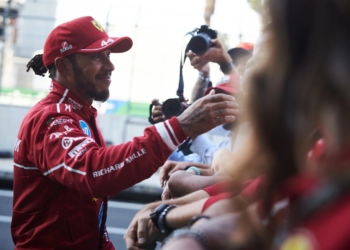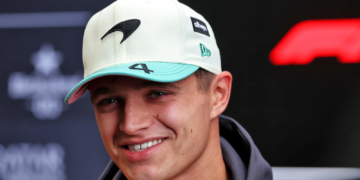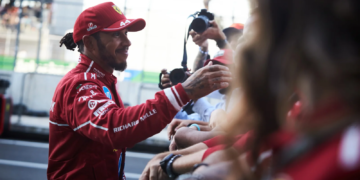Motorsport has its fair share of risks and dangers, just like any other sport. A minor error of judgment can lead to a wreck requiring serious bodywork repair, not to mention life-threatening injuries. Formula 1 rules will be tightened up following Zhou Guanyu’s shocking crash. As we can all remember, the Alfa Romeo driver was involved in an accident on the first corner at the British Grand Prix. His vehicle flipped upside down, skidded off the track, and flipped over a tire barrier before smashing into the fence. Zhou later affirmed that the titanium halo head protection system saved his life.
The development of motorsport reflects the technological advances of modern times. It matured, but accidents still happen despite mechanical and electronic driver protection devices or race cars becoming more effective. Drivers, crew, and event organizers should take some safety precautions to ensure everyone is safe on the track. In what follows, we’ll present the most efficient practices to ensure safety within the sport.
The best drivers get a complete medical check-up before an event
All drivers should complete a medical examination before competing in their first event for performance and personal safety purposes. With the help of medical screening, early recognition of risks is possible. Quick reactions are of the essence, so eye and colour blindness tests are required. Visual skills help drive with increased confidence while reducing the risk of an accident. Contact lenses are acceptable but might cause problems during a motorsport event. Those with colour blindness can compensate for their condition by wearing special glasses. Eye movement must be constant and fluid.
A physical handicap isn’t a barrier to competing in a motorsport, yet the national governing body should be aware of this fact. FIA has banned doping, so taking stimulants for emotional, physical, or mental health is out of the question. There has never been a positive test in motorsport. Nonetheless, Stirling Moss recognized taking drugs during his glory days. Drivers shouldn’t follow this example. In some cases, namely special medical conditions, it’s necessary to wear identifiable tags. The information can be included on a necklace or bracelet.
Racing cars should be made as driver-friendly as possible
Taking into account the nature of the sport, race cars are safe. They’re designed to be as safe as possible without compromising on performance. Before the start of each season, each team receives guidelines and regulations. The new cars are to be built accordingly. Not only do the vehicles have a sportier appearance, but also, they have plenty of functionality. It’s necessary to pay close attention to areas such as seats, safety harnesses, window nets, head and shoulder nets, padding, ventilation, and emergency switches. A vehicle must adapt to the new regulations even if it’s built from scratch.
Anyone who steps into a race car should benefit from a good working environment. The seat gives a sense of how the car reacts and holds the driver securely in place so they can focus on the road and maintain their body position through the turns. Carbon fibre is now used instead of aluminium because it does a better job at absorbing the shock of impact. At present, race car drivers use harnesses that secure them in their seat. Window nets are required only if the speeds are above 135 mph. Following a crash, drivers can let others know they’re injured.
Everyone must know how to intervene in an emergency
People must have the knowledge and confidence to administer emergency care in a motorsport incident. A variety of organizations offer first aid and resuscitation training at minimal expense. Skills Training Group is one such example. From rescue crews to doctors and nurses, knowing how to react in an emergency ensures everyone involved delivers a well-executed safety response. Drivers and co-drivers play an important part as they’re the first to arrive at the accident scene. If they know what to do, they can improve the situation and perhaps save a life. Training sessions should be organized in small groups and include workshops.

Safety is the basic foundation of motorsport. Immediate first aid helps prevent an issue from progressing. The first hours are decisive for how the injury heals and how fast the victim recovers. Those who complete first aid training are prepared and confident in emergency situations. The injured party goes through a shorter, less painful recovery period with fewer complications. The motorsport first aid kit is equipped with bandages, an emergency blanket, scissors, tweezers, gloves, cleaning wipes, and surgical tape, to name a few. If a driver requires medical attention, they’ll be sent to the centre at the circuit. There’s a surgeon and an anaesthesiologist, with their own operating theatre, in case the worst should happen.
Tracks should be fitted with safer barriers
The barrier lines the walls of the track to absorb the crash’s impact. Modern traffic barriers work in the same way. The impact energy to the vehicle and driver is significantly reduced, so the car isn’t forced back into traffic on the racing surface. Moreover, it protects spectators from the dangers of errant vehicles. The protective barrier saves lives in two ways. Not only does the barrier minimize damage to the drivers and cars moving at high speeds, but it is also quick to repair. Motorsport events don’t experience delays. Needless to say, any incident relating to Formula 1 or the World Rally Championship is analysed by FIA officials.
A barrier system works by absorbing impact, slowing down the car to reduce the chance of vehicle damage or trauma to its occupant. Anyone who has ever worked on a circuit is familiar with the number of crashes and the harm they cause. Formula 1 currently uses TechPro barriers, which are highly sophisticated. It’s a reaction to incidents such as Carlos Sainz’s crash in 2015 at Sochi. He lost control of the brakes, hit a wall, and went straight into the safety barrier. Alongside barriers, tracks have been adapted to neutralize dangerous corners. Traveling is done anywhere between 170-200 mph.










Discussion about this post